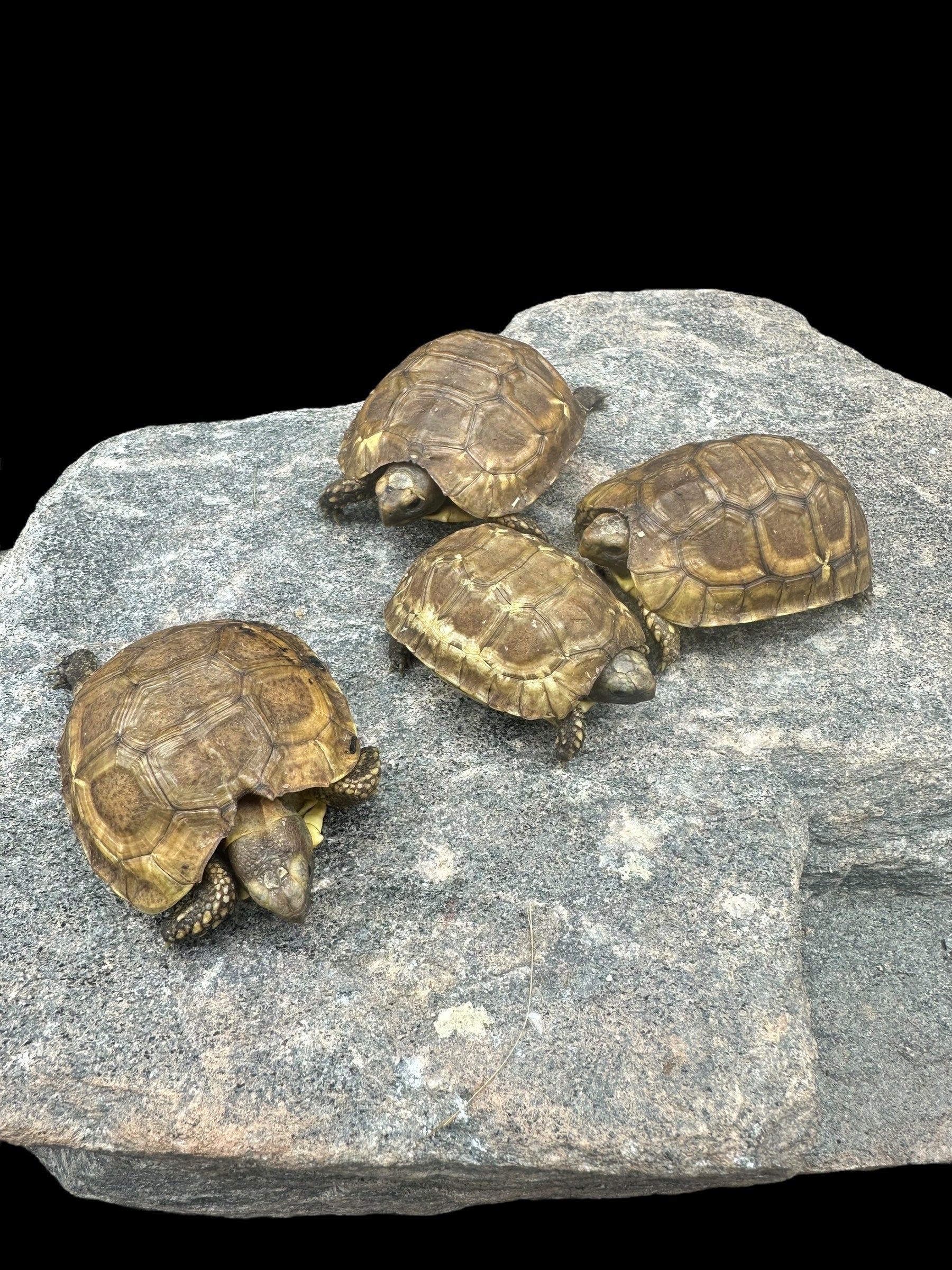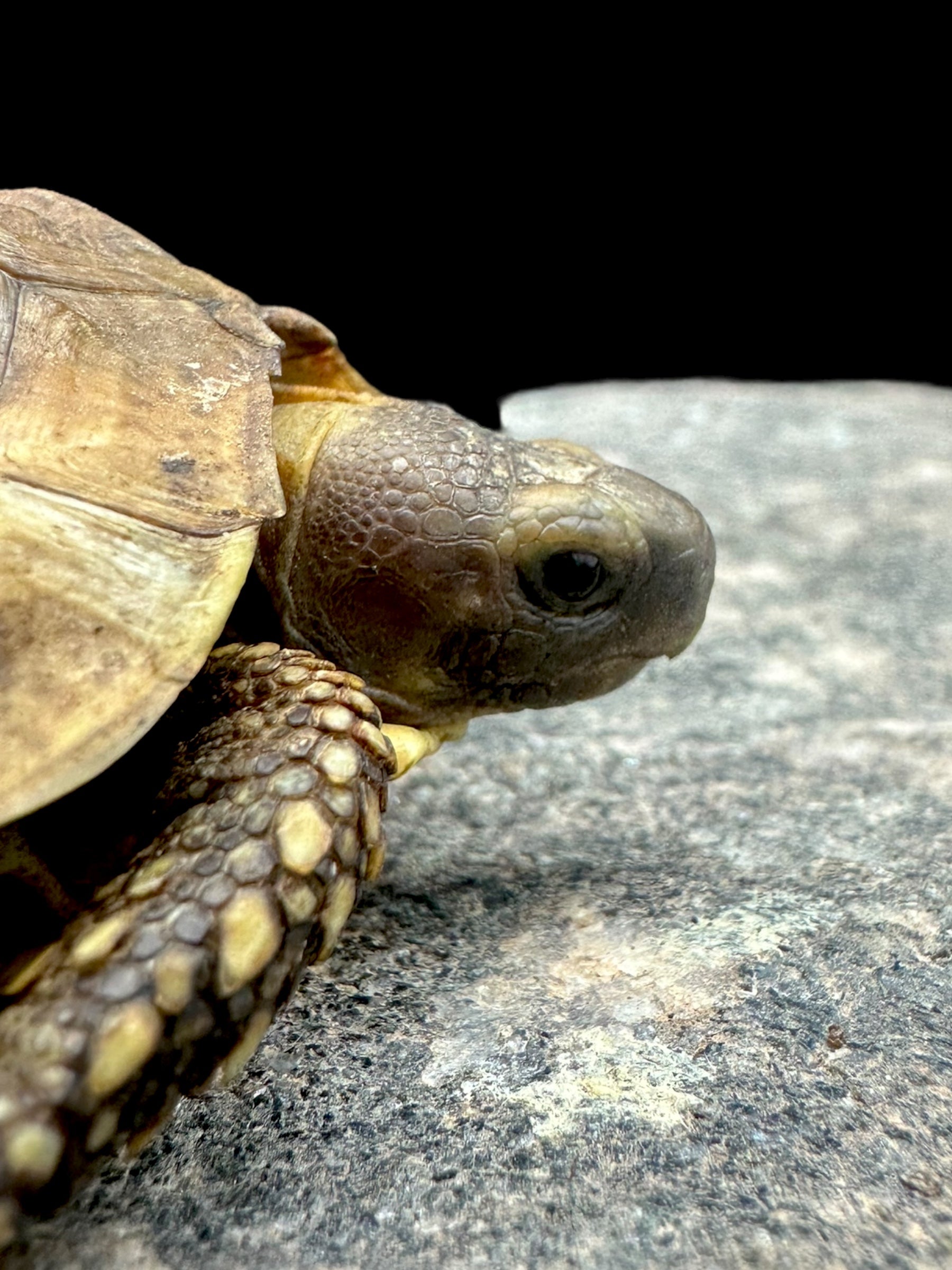Photo Disclaimer
Description
Western Hinge-back Tortoise (Kinixys belliana nogueyi) - Rarely Offered in Canada!
The Western Hinge-back Tortoise, scientifically known as Kinixys belliana nogueyi, is a small tortoise species native to tropical western Africa. This unique tortoise reaches a maximum length of up to 22 cm and is distinguished from other Kinixys members by its four claws on the front feet. Its shell has a tubular shape and can vary in color from a uniform yellowish-brown to an attractive dark brown pattern reminiscent of the pancake tortoise. Notably, this species is very rarely offered in Canada, making it a unique addition for tortoise enthusiasts.
Taxonomically, the Hinge-back tortoises (Kinixys species) originate from sub-Saharan Africa. Different species and subspecies have slightly different requirements, occupying a range of habitats, with some more accustomed to savannah grasslands (such as the Bell’s hinge-back) while others originate from forest regions (such as Schweigger’s hinge-back).
In the wild, Western Hinge-back Tortoises exhibit shy and reclusive behavior, often spending days hidden in their environments. They prefer to stay concealed, emerging primarily to soak or feed. In captivity, these tortoises thrive best in naturalistic enclosures that mimic their native habitat.
Housing Requirements:
Tortoises should ideally not be kept in a vivarium, as respiratory problems are common in poorly ventilated setups. However, to maintain humidity levels, adapted vivarium setups may be necessary for tropical species like the Hinge-back. If using a vivarium, ensure adequate ventilation by adding extra holes. Alternatively, a floor pen or tortoise table can be created with solid sides (1 foot high). For a small juvenile, a minimum size of 90 cm (3 feet) long by 30 cm (1 foot) wide is recommended to create a thermal gradient within the enclosure.
Hides are essential for providing security to these shy species. Use artificial plants, cardboard boxes, plant pots, logs, or commercially available hides, placing them at both warm and cooler ends of the enclosure. Suitable substrates include newspaper, Astroturf, or natural materials like soil, peat, or bark mulch that allow for digging and help maintain humidity. It's crucial that substrates cannot be ingested or cause blockages.
Temperature and Humidity:
Being ectothermic, these tortoises require a heat source. A basking area created with a spot bulb should maintain a temperature of 32°C (90°F) and should be kept on all day. The cool end of the enclosure should be maintained at 24°C (75°F). Background heat can be provided with a heat mat, tubular heater, or ceramic bulb, set on a thermostat to ensure overnight temperatures do not drop below 22°C (72°F).
Humidity is also vital, ideally maintained around 50%. Regular misting with warm water and providing damp substrate in a shallow container can help achieve moderate humidity. Monitoring humidity levels with a hygrometer is recommended.
Lighting:
Hinge-back tortoises must be exposed to UV-B light. Combined heat and UV-B lamps can be used, or separate bulbs can be positioned to replicate a natural basking spot. Regular checks on UV output are essential, and bulbs should be replaced according to the manufacturer's instructions. Exposure to natural sunlight during warm months is also beneficial, and creating an outdoor enclosure is recommended for their long-term health.
Diet:
Hinge-back tortoises are omnivorous, requiring a diverse diet. Their diet should consist of a variety of plant material, including fruits, vegetables, mushrooms, hay, and weeds such as sow thistles, dandelions, and plantains. Animal matter, including crickets, mealworms, earthworms, and snails, should be provided once a week, with more frequent offerings for young, growing animals. Supplementation with a high-calcium vitamin and mineral powder is crucial, particularly for live food and supermarket purchases. Fresh water should always be available, and they should be bathed in warm water twice a week.
Breeding and Behavior:
Breeding behavior typically occurs from June to November, with females exhibiting pre-laying restlessness in the fall. Clutches of eggs, usually ranging from two to five, are laid in the substrate. The incubation period lasts between 148 to 172 days, depending on environmental conditions. Hatchlings are known for their outgoing personalities compared to adults, often adapting quickly to their environment.
Overall, the Western Hinge-back Tortoise is a unique species that requires specific care to thrive in captivity, including appropriate environmental conditions and a well-balanced diet. With proper care, they can lead healthy and fulfilling lives, reflecting their natural behaviors and traits.


